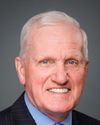Mr. Chair, a lot has happened since this government took office. In a matter of mere months we are getting things done for Canadians. We have begun to clean up government and politics by introducing the federal accountability act. We have strengthened crime legislation by tackling gun, gang and drug crimes. We have worked to keep the economy strong by cutting taxes and paying down the debt. We have protected Canada's sovereignty and advanced Canada's interest in the world and have taken a leadership role in international affairs.
On top of that, we have also done a lot for our Canadian Forces. I know that members of the House are unanimous in their desire to support Canada's military, but I also know we do not always agree on how we should do that. Indeed, investments in defence can be contentious. They often amount to very large sums and are paid for with hard-earned Canadian tax dollars. They demand the responsible and critical oversight of the House. So I welcome this opportunity before the committee of the whole today to assure each member and all Canadians that current spending by the Department of National Defence is well justified and in the interests of Canada.
To inform this debate, I want to explain the current government's vision of the defence of Canada.
I want to explain the departmental management framework that is guiding all our spending decisions while we are working to make that vision a reality. I especially want to stress that this government is going forward with a number of practical initiatives that will provide our troops with the support they deserve.
We all know that the world has changed considerably since the end of the cold war. We face new security challenges like global terrorism, the proliferation of weapons of mass destruction and failed and failing states. The stark reality remains that we lost 24 men and women in the attacks of September 11, 2001 and, unfortunately, September 11 was not a solitary event. Since that date, we have been reminded numerous times that international terrorism still poses a threat to us.
While the cold war is over, the need for diligence in Canadian defence and security has not decreased. More than 3,000 Canadian soldiers, sailors and air force personnel are deployed overseas in operations today. On any given day, about 8,000 Canadian Forces members are preparing for, engaging in or returning from an overseas mission. At home approximately 10,000 military men and women diligently work to defend our territory and its approaches, to assert our sovereignty and to serve our communities.
The expectations of a declining military role in the post cold war world have not panned out. The demand for defence capabilities continues to be strong. That is why the government is committed to strengthening the independent capacity of the Canadian Forces. We need a three-ocean navy, a robust army and a revitalized air force that is able to operate as an integrated Canadian Forces team to defend, to help protect the North American continent and to contribute to stability abroad.
To guide our steps forward, the Department of National Defence, in accordance with the Treasury Board's government-wide mandate, is implementing a new planning and accountability structure. It is called the program activity architecture and is based on three strategic outcomes that the Department of National Defence and the Canadian Forces provide to Canada.
The first is that Canadians are confident that the Canadian Forces have the capability and the capacity to meet Canada's defence and security commitments.
The second is that the Canadian Forces achieve success in operations, whether at home dealing with severe spring floods in Manitoba or abroad bringing security to southern Afghanistan.
The third is that the Canadian Forces and the Department of National Defence promote good governance, Canadian identity and influence in a global community.
Canadians identify with and are proud of the Canadian Forces. On the international scene, the professionalism, performance and bravery of our men and women bring much credibility to Canada.
To achieve these results, the program activity architecture describes three main activities around which the work of the department is oriented.
The first activity consists in generating and sustaining relevant, responsive and effective combat-capable integrated forces. The second consists in conducting successful operations, and the third consists in contributing to the Canadian government, Canadian society and the international community in accordance with Canadian interests and values.
Together these are obvious but profound goals for the Department of National Defence and the Canadian Forces.
The government has moved forward on some major initiatives that will contribute to achieving these goals, which the recently tabled supplementary estimates support. For instance, we announced plans to expand the numbers of the Canadian Forces. We have initiated a program to increase the regular force by 13,000 and the reserves by 10,000.
A force expansion of such magnitude requires an aggressive national recruitment campaign, as well as the expansion and modernization of our recruitment and training systems. We are also working hard to retain existing military members by providing fair pay and allowances, improving base infrastructure and providing appropriate compensation for special forces and other members engaged in operations.
In addition, as I announced in June, we are planning to acquire medium size logistics trucks, medium to heavy lift helicopters, strategic and tactical aircraft and joint support ships. These procurement projects will not only enhance the capabilities of the Canadian Forces, but through the industrial regional benefits, policy they will also support our domestic defence industry.
To assure Canadians that their military is serving them at home, we are exploring options for Arctic defence initiatives and for territorial and rapid reaction battalions. Because Canadian security is inseparable from stability abroad, we are throwing our full support behind the mission in Afghanistan.
We have extended the mission to February 2009 and we have enhanced the configuration of our military contingent to address current military needs in theatre. They are extremely positive developments for the Canadian Forces and for all Canadians. Because the department has created a management framework that guides our resource allocation, we know that these investments are the right investments for Canada.
Having said that, the substantial efforts we have made so far cannot be the end of the story. It will take several years to restore the Canadian Forces to the level sufficient to meet Canada's defence needs. That is why in the coming months the government will release a Canada first defence strategy. This document will outline the capabilities that the Canadian Forces need for the next 10 years and beyond.
When I say that this government is determined to do more for the Canadian Forces this year and in the years to come, I do not mean that we are simply going to spend more money.
We have also looked at a number of ways of reducing costs in order to make better use of every dollar allocated to national defence. For example, we are transforming our defence procurement process so that we can provide the Canadian Forces with what they need when they need it, but in an economical and timely manner.
Managing the resources of a federal department requires difficult decisions, but at the heart of every decision that this government makes is our fundamental commitment to enhance the security of Canadians.
The Canadian Forces need our support today, tomorrow and the years to come. We just cannot give them verbal support. The Canadian Forces need tangible resources to do their job. It is that simple.
I welcome questions from members and I welcome constructive debate.






